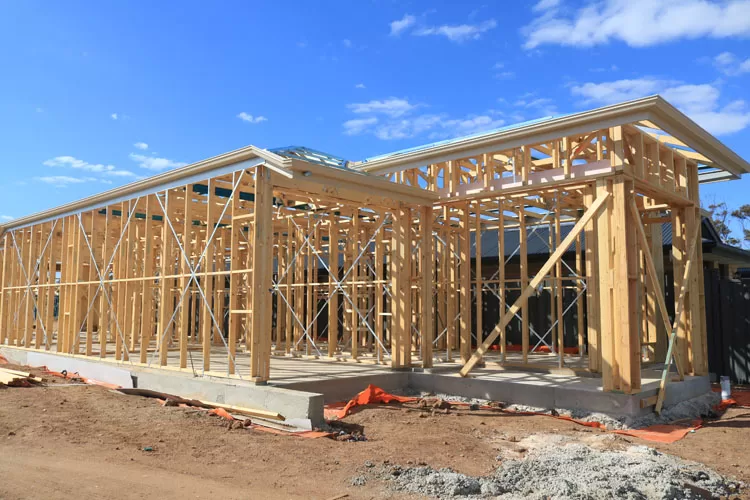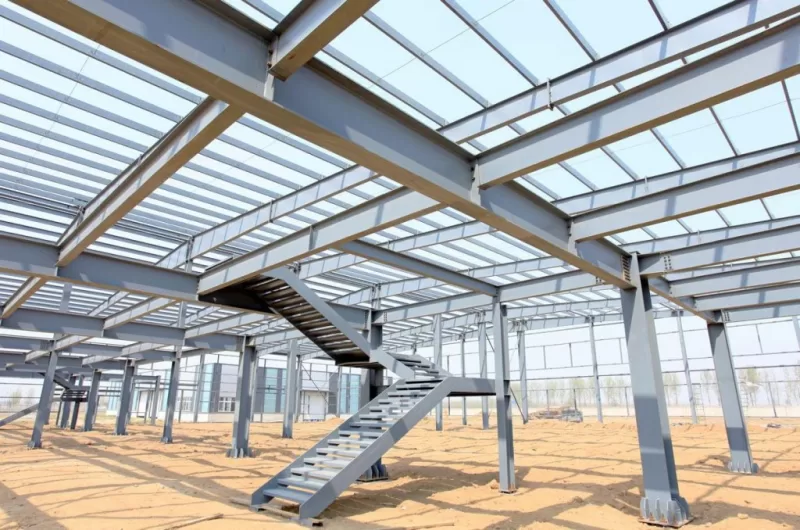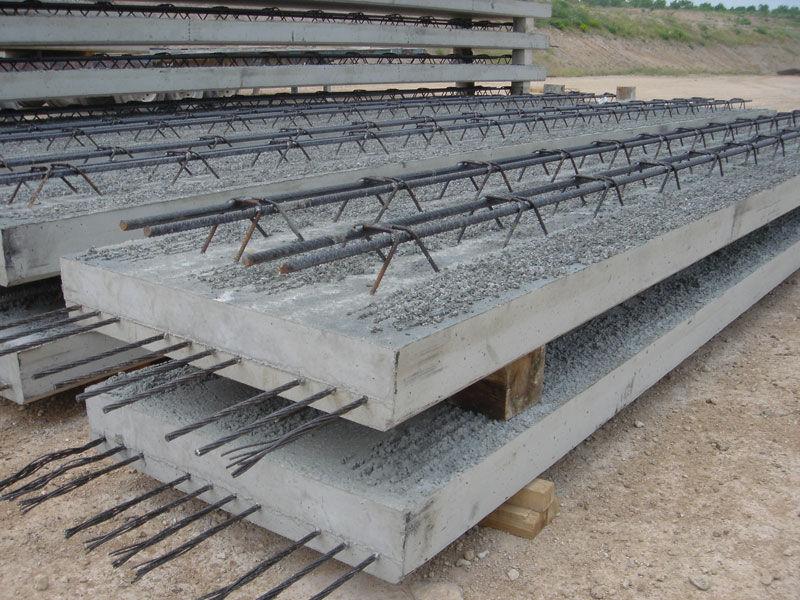Commonly Used Materials in Structural Engineering
Structural engineering depends on the knowledge of construction materials and their corresponding properties for us to better predict the behavior of different materials when applied to the structure. Generally, the three (3) most commonly used materials in structural engineering are steel, concrete and wood/timber. Knowing the advantages and disadvantages of every material is important in ensuring a safe and cost-effective approach to designing structures. So let's take a look at the pros and cons of steel vs timber vs concrete!
Structural Steel
Steel is an alloy consisting mainly of iron and carbon. Other elements are also mixed into the alloy to gain other properties. One example is the addition of chromium and nickel to create stainless steel. Increasing the carbon in steel has the intended effect of increasing the tensile strength of the material. Increasing the carbon content makes the steel more brittle, which is undesirable for structural steel.
Advantages of Structural Steel
- Steel has a high strength/weight ratio. Thus, the dead weight of steel structures is relatively small. This property makes steel a very attractive structural material for high-rise buildings, long-span bridges, structures located on ground with low soil bearing and in areas with high seismic activity.
- Ductility. Steel can undergo large plastic deformation before failure, thus providing large reserve strength.
- Predictable material properties. Properties of steel can be predicted with a high degree of certainty. Steel in fact shows elastic behavior up to a relatively high and usually well-defined stress level. In contrast to reinforced concrete, steel properties do not change considerably with time.
- Speed of erection. Steel members are simply installed to the structure, making for a very short construction time. This normally results in quicker economic payoff in areas such as labor costs.
- Ease of repair. Steel structures in general can be repaired quickly and easily.
- Adaptation of prefabrication. Steel is highly suitable for prefabrication and mass production.
- Repetitive use. Steel can be reused after a structure is disassembled.
- Expanding existing structures. Steel buildings can be easily expanded by adding new bays or wings. Steel bridges may be widened.
- Fatigue strength. Steel structures have relatively good fatigue strength.
Disadvantages of Structural Steel
- General cost. Steel is very energy intensive and naturally more expensive to produce. Steel structures may be more costly to build than other types of structures.
- Fireproofing. The strength of steel is reduced substantially when heated at temperatures commonly observed in building fires. Steel also conducts and transmits heat from a burning portion of the building quite fast. Consequently, steel frames in buildings must have adequate fireproofing.
- Maintenance. Steel exposed to the environment can damage the material and even contaminate the structure through corrosion. Steel structures exposed to air and water, such as bridges and towers, are painted regularly. Application of weathering and corrosion-resistant steels may eliminate this problem.
- Susceptibility to buckling. Due to high strength/weight ratio, steel compression members are, in general, more slender and consequently more susceptible to buckling than, say, reinforced concrete compression members. As a result, more design considerations are needed to improve the buckling resistance of slender steel compression members.
Figure 1. Structural Steelwork Overview
Reinforced Concrete
Concrete is a mixture of water, cement and aggregates. The proportion of the three main components is important so as to create a concrete mix of desired compressive strength. When reinforcing steel bars are added into concrete, the two materials work together with concrete providing the compressive strength and steel providing the tensile strength.
Advantages of Reinforced Concrete
- Compressive strength. Reinforced concrete has a high compressive strength compared to other building materials.
- Tensile strength. Due to the provided reinforcement, reinforced concrete can also withstand a good amount tensile stress.
- Fire resistance. Concrete has a good ability to protect reinforcing steel bars from fire for extended periods. This buys time for the reinforcing bars until the fire is extinguished.
- Locally sourced materials. Most materials required to produce concrete are easily sourced locally, which makes concrete a popular and cost-effective choice.
- Durability. The reinforced concrete building system is more durable than any other building system.
- Moldability. Reinforced concrete, as a fluid material in the beginning, can be economically molded into a nearly limitless range of shapes.
- Low maintenance. Reinforced concrete is designed to be rugged, using low value materials such as sand and water that do not require extensive maintenance. The concrete is meant to enclose the rebar entirely such that the rebar is undisturbed. This makes the cost of maintenance for reinforced concrete structures very low.
- In structure like footings, dams, piers etc. reinforced concrete is the most economical construction material.
- Rigidity. It acts like a rigid member with minimum deflection. A minimal deflection is good for the serviceability of buildings.
- User-friendliness. Compared to the use of steel in structure, less skilled labor can be used in the construction of reinforced concrete structures.
Disadvantages of Reinforced Concrete
- Long-term Storage. Concrete cannot be stored once it is mixed as the cement reacts with water and the mixture hardens. Its main ingredients have to be stored separately.
- Curing time. Concrete has a thirty day curing period. This factor affects greatly in the construction schedule of the building. This makes the speed of erection of cast-in-place concrete slower than steel, however, this can be improved greatly with the use of precast concrete.
- Cost of forms. The cost of the forms used for casting RC is relatively higher.
- Greater cross-section. For a multi-storied building the reinforced concrete column section (RCC) is larger than steel section as the compressive strength is lower in the case of RCC.
- Shrinkage. Shrinkage causes crack development and strength loss.
Figure 2. A typical example of a Reinforced Concrete
Timber
Wood is an organic, hygroscopic and anisotropic material. Its thermal, acoustic, electrical, mechanical, aesthetic, working, etc. properties are very suitable to use it is possible to build a comfortable house using only wooden project. With other materials, it is almost impossible. Wood is obviously both a common and a historical choice as a structural engineering material. However, in the past few decades, there has been a move away from wood in favor of engineered products or metals like aluminum.
Advantages of Timber
- Tensile strength. For being a relatively lightweight building material, wood outperforms even steel when it comes to breaking length (or self-support length). Simply put, it can support its own weight better, which allows for larger spaces and fewer necessary supports in some building designs.
- Electrical and heat resistance. It has a natural resistance to electrical conduction when dried to standard moisture content (MC) levels, usually between 7%-12% for most wood species. Its strength and dimensions are also not significantly affected by heat, providing stability to the finished building and even safety implications for certain fire situations.
- Sound absorption. Its acoustic properties make it ideal for minimizing echo in living or office spaces. Wood absorbs sound, rather than reflecting or amplifying it, and can help significantly reduce noise levels for additional comfort.
- Locally sourced. Wood is a building material that can be grown and re-grown through natural processes and also through replanting and forestry management programs. Select harvesting and other practices allow growth to continue while larger trees are harvested.
- Environmentally-friendly. One of the biggest challenges of many building materials, including concrete, metal, and plastics, is that when they are discarded, they take an impossibly long time to decompose. When exposed to natural climate conditions, wood will break down much more quickly and actually replenish the soil in the process.
Disadvantages of Timber
Shrinkage and swelling of wood is one its main disadvantage.
Wood is a hygroscopic material. This means that it will absorb surrounding condensable vapors and loses moisture to air below the fiber saturation point. Another disadvantage is its deterioration. The agents causing the deterioration and destruction of wood fall into two categories: Biotic (biological) and abiotic (non-biological). Biotic agents include decay and mold fungi, bacteria and insects. Abiotic agents include sun, wind, water, certain chemicals and fire.

Figure 3. A timber/wooden structural frame
Summary
To better describe steel, concrete and wood. Let us summarize their major characteristics that would highlight each material.
Steel is very strong in both tension and compression and therefore has high compressive and tensile strengths. Steel has an ultimate strength of about 400 to 500 MPa (58 – 72.5 ksi). It is also a ductile material that yields or deflects before failure. Steel stands out for its speed and efficiency in construction. Its relative light weight and ease of construction allows for a workforce about 10 to 20% smaller compared to a similar concrete-based structure being built. Steel structures also have excellent durability.
Concrete is extremely strong in compression and therefore has high compressive strength of about 17MPa to 28MPa. With higher strengths up to or exceeding 70 MPa. Concrete makes it possible to design very robust and durable buildings, and taking advantage of its thermal mass by keeping it inside the building envelope can help regulate interior temperatures. There is also an increasing use of precast concrete in the building industry, which offers advantages in terms of environmental impact, cost and speed of construction.
Wood is resistant to electrical currents, making it an optimal material for electrical insulation. Tensile strength is also one of the main reasons for choosing timber as a building material; its remarkably strong qualities make it the perfect choice for heavy-duty building materials such as structural beams. Wood is much lighter by volume than both concrete and steel, it is easy to work with and very adaptable on site. It is durable, results in less thermal bridging than its counterparts and easily incorporates prefabricated elements. Its structural performance is very high and its compressive strength is similar to that of concrete. Despite all these, timber is used more widely for residential and low-rise structures. It is rarely used as the main material for highrise structures.
These are the most common construction materials used for building. Each material has its own unique set of benefits and drawbacks. Eventually these may be superceded by materials that have very little to no limitations with the technological advancements in the future. Regardless, our current building materials will remain relevant for many decades to come.




